
STARTING THE YEAR RIGHT AT THE TOP
We made it to 2021! May the upcoming year be better than 2020, the year that shall henceforth be known as “Wha…???”
I’m starting the year with a toe dip into Italy. Specifically, Sangiovese. I thought this would be pretty straightforward, but no! As always, I have discovered way more than I expected. So I’m going to slim down the information a bit so you don’t nod off into your wine. Attenzione e andiamo….
Sangiovese, Sanguis Jovis, blood of Jove. This is Latin referring to the Roman god Jupiter from which the name originated. The grape is indigenous to Italy; it is its most important grape and has been growing there for millennia. While the grape can be dated back to Roman times, it has been postulated that it may have originally been cultivated in Tuscany by the Etruscans from wild vitis vinifiera vines. In any case, Sangiovese can be found throughout the country but most of it is still grown in Tuscany where it lays claim to its most famous expressions such as Chianti, Vino Nobile di Montepulciano, and Brunello di Montalcino.
Surprisingly, Sangiovese is not grown much outside of Italy. Well, maybe not surprisingly because it is a difficult and troublesome grape to cultivate. It likes a nice long warm growing season to ripen. Give it a couple of rainy days, some overcast, and these finicky grape bunches can ripen unevenly which is a problem for winemakers. It also has a propensity to mutate. No one really knows how many clones exist, but at least 14 have been categorized, of which brunello is one of the best regarded.
In addition to brunello which makes the famous Brunello di Montalcino, some others are sangioveto used in Chianti Classico, prugnolo used in Vino Nobile di Montelpuciano and morellino grown along the coast of Maremma. There is also nielluccio on Corsica which is actually a French owned island but it was Italian until 1768 so that explains that.
Sangiovese is actually grown in a few other countries. A little here, a little there. Like some in Argentina, even less in the US (California, Washington), a tiny bit in Australia, Romania and Chile, and a vine in my uncle’s backyard. Surprisingly, Sangiovese is the sixth most grown red grape in Washington state. It’s still not very much, but it’s definitely here. In fact I’ll be tasting a 100% Sangiovese from Brian Carter Cellars in a bit.
THE MANY MOODS OF SANGIO
Now is a good time to get into the flavor profile of this wine. It varies quite a bit due to the above mentioned clones, and the many microclimates where it’s grown in the hilly Italian landscape. And, of course the influence of soil. But, generally speaking we can break it down into young wine vs older wine and cooler climate vs warmer. Young Sangiovese has fresh, even tangy, fruit flavors of red berries and tart cherry, spiciness with herbal undertones, cinnamon, mineral and tea. It’s light and lively and has earthy aromas. Peppermint, sage, sour cherry and floral characteristics are also found on the nose. Older wines can take on notes of tar, dirt, chocolate and leather.
Cooler climates result in even higher acid, in this always high acid wine, and creates more delicate and refined wines. Warmer climates make a a bigger, richer wine with fleshy opulence. It can go from earthy and rustic as in many Chianti Classicos, to round and fruit forward in new world renditions. It tends to be more savory than sweet. Sangiovese is lighter in color with some transparency, always red with medium body.
Like Grenache, it is prone to oxidation and can, if not carefully made, show some bricking (that orangish color around the rim) even after just a few years in the bottle. And, as mentioned above, it is always high in acid with medium to high tannins. That means this wine is built for food. All that acid clears your palate making ready for that next bite of pasta with tomato sauce, or steak or grilled meats. It really does go with a wide variety of food!
SANGIOVESE & THE CLASSICS
Here are some of the better known Sangiovese wines of the region. I think the most recognizable one is Chianti. Let’s just say Chianti has gone thru some tough times. But it has come a long way from those checkered tablecloths, plastic grapes, and straw wrapped bottles. (By the way, that straw bottle was called a fiasco).
In Italian, it has nothing to do with our current understanding of the word fiasco being more akin to flask, but it sure seems to fit considering the poorly made wine that was then inside!) Chianti is made in Tuscany in seven sub zones around a central area known as Chianti Classico. And, while Chianti in all these sub regions has been given the DOCG rating, in 1984 the uniqueness of Chianti Classico earned it a DOCG designation of its own. That translates to Denominazione di Origine Contrallata e Garantita and is not only a mouthful of Italian words, but the highest designation in Italy. New regulations have really improved the wine and changed the old formula.
In 1995 it became legal to have a Chianti without the old blend. It can now have 100% Sangiovese (the clone Sangiovetto) if desired but must contain at least 80%. Since 2006 the white wines that were previously used are no longer allowed in the blend. Aged Chianti Classico requires two years in barrel and three months in bottle and can then be labeled Riserva.
Vino Nobile di Montepulciano is a red wine with a DOCG designation that is produced in the vineyards surrounding the town of Montepulciano. This wine is made with a minimum of 70% of the local Sangiovese clone prugnolo gentile blended with other local varieties. It is aged for two years of which one year must be in oak barrels, or three years if it is a riserva. Don’t confuse this with Montepulciano d’Abruzzo which is a red wine made from the Montepulciano grape! I know, I know…
Finally, the renowned Brunello di Montalcino using 100% of the brunello clone. The word brunello means “little brown one” which I find rather affectionate. But there is nothing diminutive about this grape. Brunello is notable for having thicker skins thus producing wines with bolder fruit flavors, high tannin and high acidity. These factors extend the life of these wines. Best to wait a decade or so before drinking.
There are two classifications, Normale which requires aging for five years total before release with a minimum of two years in barrel and four months aged in the bottle. The Riserva requires aging six years total before release with a minimum of two years in barrel and at least six months in the bottle. Brunello’s flavors are greatly influenced by the age of the wine. And this wine has a reputation for longevity. Evidently there are still a few bottles available from 1891 and 1898! And that’s because this wine is only made in the designated years of a good harvest.
If the harvest or even a vineyard, is not deemed good enough for a particular year it gets declassified and used for Rosso di Montalcino. These wines are not subject to the stricter standards of Brunello. Sangiovese wines are not generally expensive but Brunello di Montalcino is the exception. I think I saw one in the $600 range and many in the hundreds. And who knows how much the ones from the 1800’s are! If those are not in your financial comfort level, seek out a Rosso which is much more affordable and can be quite good.
PUT IT TO THE TEST
So here are the bottles I sampled for this article. I have to say this is the fun part!
Tenuta di Renieri 2016
Chiant Classico DOCG 14.5% abv
$16.99
Transparent garnet in color with a light cherry, herbal and tomato leaf nose. With medium body, high acidity and definite tannins this wine was very dry, a little spicy like red hots, soft red cherry and reminded me of rusty nail, dried rose petals with a distinct mineral flavor like iron. Very much a food wine!
Patrizia Cencioni 2013
Brunello di Montalcino DOCG 14% abv
$39.99
Dark ruby, not as transparent as the above wine. Upon opening, it smelled immediately richer, a little creamy like strawberry pudding and potpourrie. The flavors was akin to those chocolate covered brandied cherries, dark plum and cranberry. Still the expected high acidity and pretty tannic due, I think, to it being only a 2013. It ended on a tart astringent note that leaves one licking their lips and wanting a bite of that roast!
Brian Carter Cellars 2015
« 1 » Sangiovese
Boushey Vineyard Yakima Valley
$65.00
Ok, in the first place, it’s hard not to love anything that comes from a Boushey Vineyard. And, I always expect a wine I really like from Brian Carter. Call me biased, but this bottle was no exception. Deep garnet in color, fragrant with savory aromas of earth, game meats and oregano plus cherry and strawberry leather followed on the palate with dried and fresh cooking herbs, dark cherry flavors and a touch of cedar. This is a delicious and well balanced wine but with enough acidity and tannin to beautifully complement the roasted leg of lamb I had with it.
DON’T FORGET THE FOOD PAIRING
Ok, folks, that’s the blood of Jove in one cup. To sum up, I would say food, food, food! That’s the key to enjoying Sangiovese. It is savory and fruity and even if it tastes too acidic or too tannic try it with food. It changes everything! I tasted all of these with things like prosciutto, Mediterranean olives, cheeses of different sorts and it was all good!
So take care all you wine drinkers. We want to see all of you in the future. In the meantime, keep tasting, experimenting and, most of all, enjoying a nice glass of wine.
Cin, cin,
~ Peggy

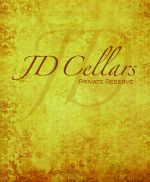
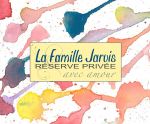

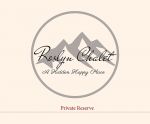

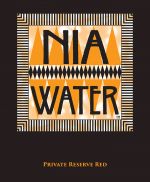

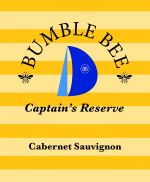
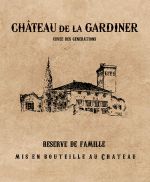
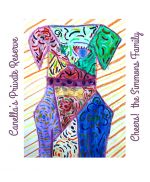
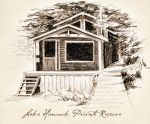
0 Comments